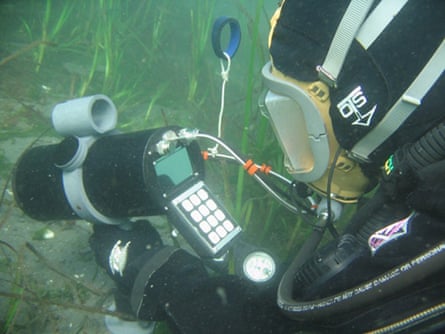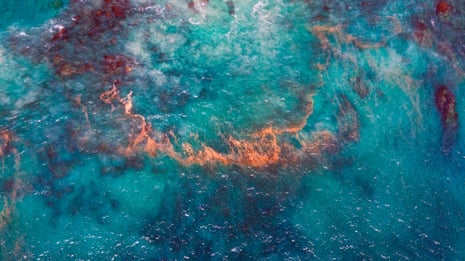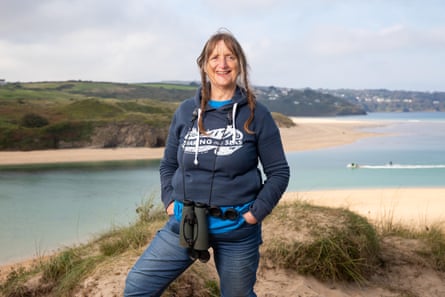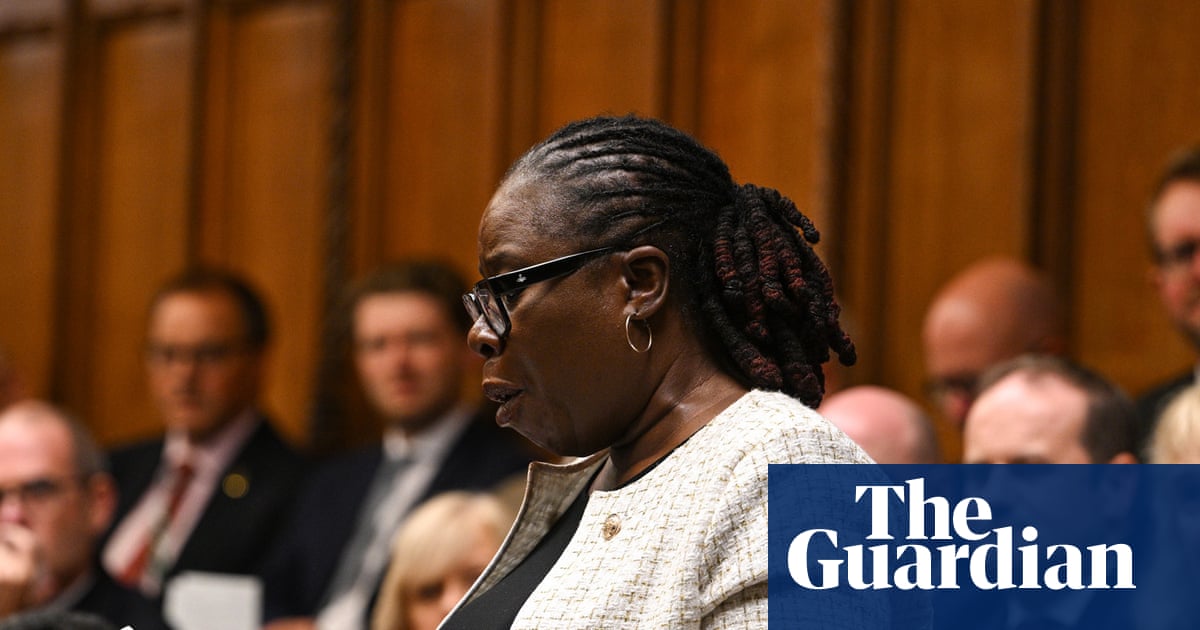In October 2024, a US company called Ebb Carbon announced the world’s largest marine carbon removal deal to date, signing a multimillion-dollar agreement with Microsoft to try to help fix a very real problem in the world’s seas: ocean acidification.
Ebb plans to use a method called electrochemical ocean alkalinity enhancement (OAE) to mimic the natural process of ocean alkalisation – in other words, it wants to add huge amounts of alkaline materials to ocean waters that scientists now know are acidifying at an alarming rate.
Ebb is not alone. In September 2024, Canada’s Planetary Technologies raised just over $11m (£8m) from companies including Evok Innovations and BDC Capital to enhance ocean alkalinity, while in 2025, another firm, Equatic, sold 60,000 carbon removal credits to Boeing, to enable it to do the same.

The sector’s growth – part of the larger carbon removal market – has been astronomic, and has started to ring alarm bells for many ocean scientists across the world.
“The jury’s still out on the damage that OAE could do,” says Dr James Kerry, an expert on coral reefs and senior research fellow at James Cook University. He says if too much alkalinity is added to the water, an event called precipitation can occur: carbonates could create minerals in the water that act as pollutants. “It might block light levels; it might be mistaken as food by marine creatures.”
Around the world, ocean acidification is rising. As the ocean absorbs 30% of excess atmospheric carbon, it sets up a chain of chemical reactions that results in the ocean’s pH becoming dangerously acidic, which in turn affects humans and marine life.

Global seawater pH has increased 40% since preindustrial times, with nearly half of that increase occurring since the 1980s. On the west coast of the Americas, upwellings of deep-sea waters contributed to a mass acidification event in 2012 which contributed to kelp forests dying along more than 220 miles (350km) of coastline. These shifts in the ocean’s acidity affect the smallest creatures most, in particular crustaceans such as shellfish or crabs, which are unable to build their skeletons in such conditions.
While few doubt that ocean acidification is a real and growing problem, the concern is that the science behind geoengineering solutions, which manipulate the Earth’s natural processes to try to solve a problem, is in its infancy. Yet hundreds of millions of dollars are being poured into enacting these solutions.
Big companies buy credits in carbon dioxide (CO2) removal projects as a way to offset their own emissions, allowing them to meet their sustainability targets or comply with regulations.
Total carbon removal purchases (not just those for marine projects) rose from £41m in 2022 to more than £1.9bn in 2024, according to the Wall Street Journal. Some experts say the industry could grow to £37bn by 2030, driven by industries that struggle to reduce their emissions, in particular aviation, cement and steel production.
“In all sorts of mitigation approaches, everything is about scale,” said Dr Christopher Gobler of Stony Brook University. “If not scaled large enough, they’ll have no effect. If over-scaled, they could push pH too high, which could create problems for certain organisms, such as sea grasses.”
Ben Tarbell, CEO of Ebb, says that the question of scale is “fundamental to any climate solution” and that the firm is conscious of doing this safely and responsibly. “We precisely measure and meter alkalinity that is introduced to the ocean,” he says. “We continuously track key water indicators like pH, and can shut down automatically if any thresholds are approached.”
He also points to a study done with scientists and the local Lower Elwha Klallam tribe in Port Angeles, Washington, that the company undertook into testing the effects of alkaline enhancement on salmon in carefully controlled conditions.
As the industry moves forward, many are looking to Ebb and its Microsoft deal to see what happens next. Now operating in Washington state in the US at less than 100 tons a year of carbon removal, this summer the company will move to a new plant in Port Angeles, just 30 miles (50km) away, which can remove 1,000 tons of carbon a year.

“This plant will enable us to have confidence to then build much, much bigger plants,” says Tarbell. The company builds its infrastructure on to existing desalination plants. “Our approach to ocean alkalinity enhancement can achieve over 2bn tons of CO2 removal a year in the coming decades.”
He adds: “We will not fix the entire bulk of the ocean, but we’ll be able to de-acidify the coastal ocean, which is where most of the life forms thrive.”
Since the technologies these companies use are new, international and national legislative bodies are struggling to keep up. . While an international legal consensus on how to control ocean alkalinity enhancement is reached, some companies are forging ahead with field trials.

In 2022, Canada’s Planetary Technologies drew ire for its experiments in St Ives Bay in Cornwall, UK. Its ocean alkalinity enhancement techniques became the target of a months-long campaign by local people, surfers, wildlife organisations and business owners, who all felt that they were not given sufficient information about what damage these experiments might do.
Some, such as Sue Sayer, founder of the Cornwall Seal Group Research Trust, worried about damage to the local ecosystem, in particular the grey seal population. “In the best-case scenario, there are no impacts on the seals; in the worst-case scenario there’s no fish, no seals, no surfers, no tourism, no economy,” she said at the time of the protests.
Planetary Technologies no longer operates in the UK, but by 2024 it had announced a new round of funding, including a carbon credit sale to Microsoft. It said in April this year that the Cornish trial “demonstrated great potential” but that it had since decided not to pursue a full programme in Cornwall “due to commercial infeasibility”.
When asked about its new round of funding and the Cornwall protests, the company declined to comment.
Many scientists are not opposed to exploring the possibilities of geoenginering, especially as the pressure to do something more than simply reduce emissions grows.
“The ultimate cause of global ocean acidification is rising CO2 to the atmosphere from rising emissions,” says Gobler. But, he says, as the “toolbox” to fight emissions is being developed, “being able to examine the net CO2 effect of each approach probably should be a consideration”.
Brad Ack, CEO of Ocean Visions, a marine carbon removal nonprofit, underlines this. “There’s one driver line of pain that we’re seeing on the planet, and that is the concentration of greenhouse gases in the atmosphere. And there’s only two ways to affect that. One is to stop putting the CO2 in, and the other is to take it out.”

But many want to look at other solutions first and are worried about the speed of progress of this manmade approach. Kerry suggests looking to more nature-based solutions, such as marine habitat restoration and protection as a way to mitigate the problem.
Other issues that firms face is accurately assessing how much carbon is removed by OAE. Factors as varied as water depth, temperature, tides and seafloor variability all affect how much atmospheric carbon is removed and how long it will be sequestered.
Dr David Ho, of [C]Worthy, a marine carbon removal nonprofit that offers formulas for techniques such as ocean alkalinity enhancement, believes that carbon removal efforts should be driven at government level. “It makes sense that these companies have to sell credits to survive,” he says. “At the same time, they have no way to prove that what they’re doing is effective – that’s a big problem.”

.png) 3 months ago
34
3 months ago
34

















































